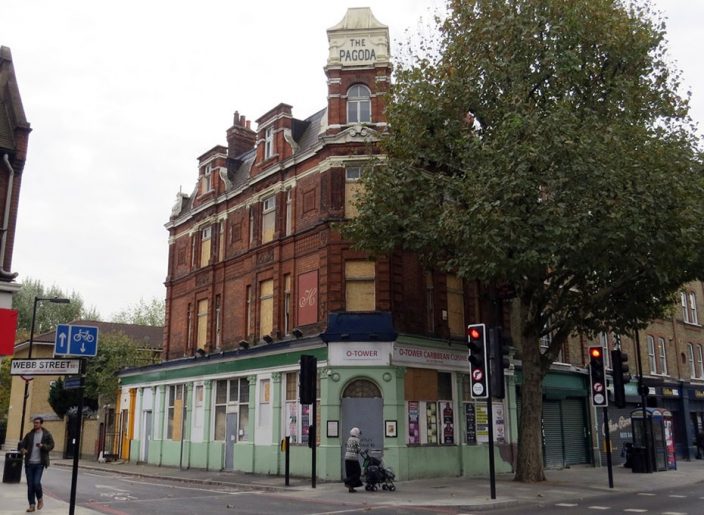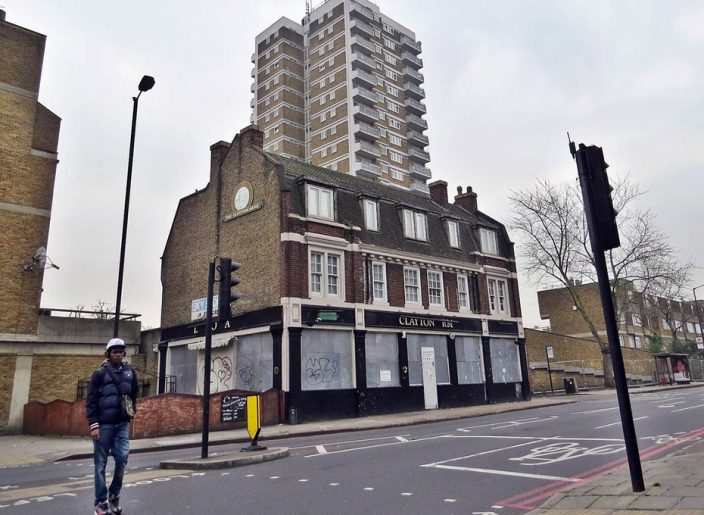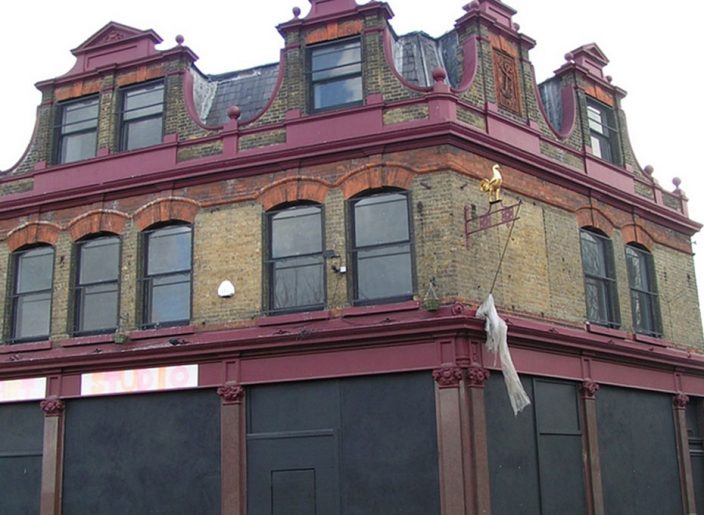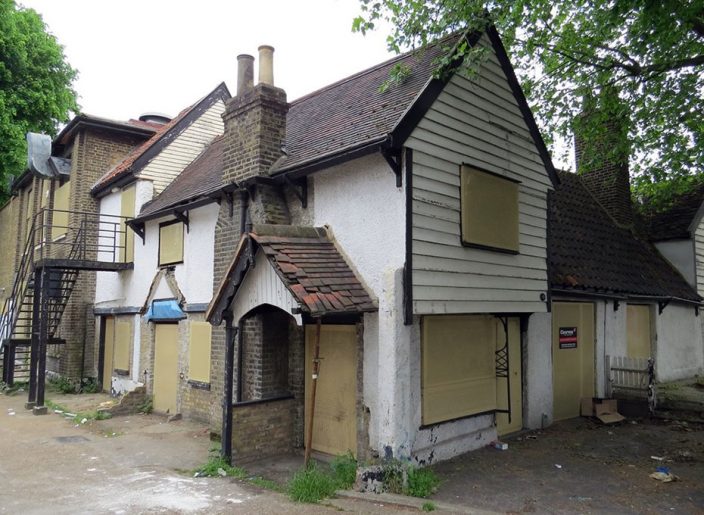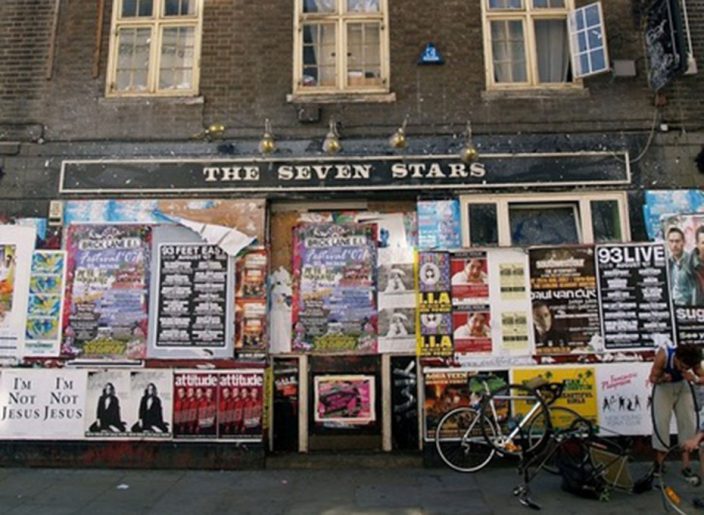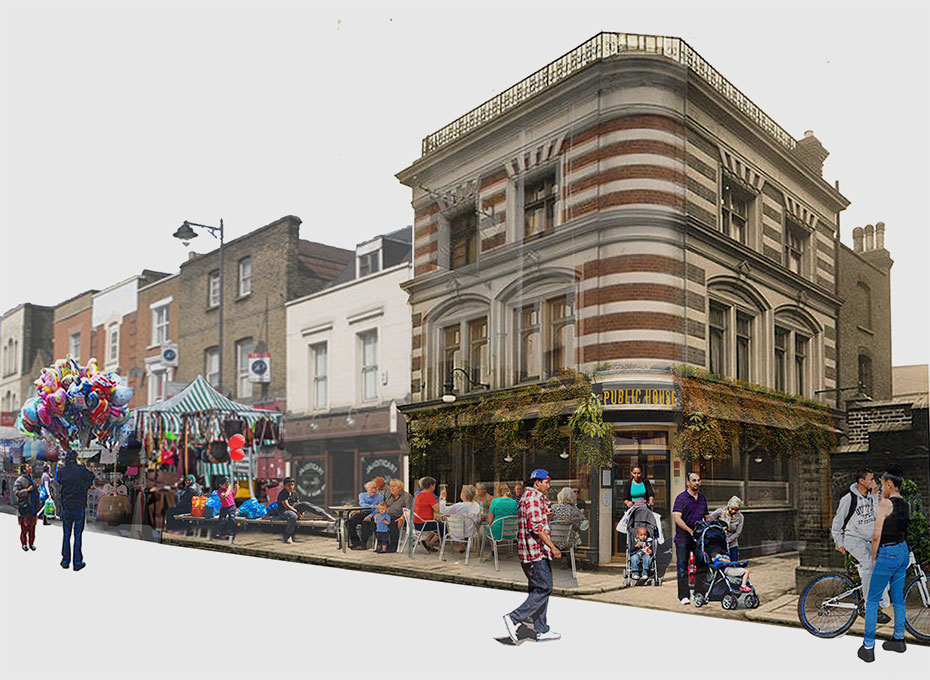
Published in London Towns New London Architecture 2017. Pubs are at the heart of London’s towns, but they are endangered, with 25% (1220) closed since 2002. Many stand empty, an unhappy sign of decline. Others have been converted or demolished. Now the Mayor has pledged to do ‘everything in his power’ to stop the closures. Meanwhile communities are becoming increasingly polarised and segregated, with isolation and loss of identity a threat to social inclusion and local character.
Public House is a plan for a community takeover of redundant pubs – breathing life back into London’s ‘locals’ by reviving their roots and giving them a new and broader social purpose.
From Roman taverns, through Anglo-saxon alehouses to 19C public houses, the pub and landlord have played a fundamental role in London’s communities and culture. Called by Pepys “the heart of England”, they were a place for public gatherings, refreshment, gossip, entertainment, refuge. Welcoming transient as well as local populations, they have always crossed social barriers and helped sustain communities during periods of hardship.
Pubs have a head start in creating social infrastructure. Located in the centre of neighbourhoods, usually visible and even architecturally impressive, they already have community value. Their history and familiarity can provide the impetus for local people to get behind the project.
Each Public House will be a social hub, adapted to local needs, depending on the make-up of the community. Activities and services, throughout the day, will be generated and run by volunteers and users. These might include:
- continued use as a licensed pub
- café
- meals for delivery/collection
- base for other social enterprises
- day centre
- creche
- activities for different age groups (yoga, dance classes, crafts, darts etc.)
- nail bar, barber, hairdresser, physio
- employment, debt, business and other advice
- hot desk facilities
How Public House might work:
- a suitable pub is nominated, approved and designated a Community Asset. It must:
– be located in the centre of a community of sufficient size to sustain activity
– have a committee of local activists prepared to adopt, drive and support it - funding is sought from local authority and other grant bodies, local businesses’ CSR and private donors; plus support and donations in kind
- ownership passes to a Community Land Trust (or is that just Community Trust)
- the LA provides continuing support, with funding for services and training
Successful Public Houses will become exemplars, to be copied elsewhere. Like their namesakes, they might even be part of the planned social infrastructure of new communities.
